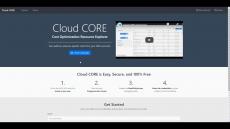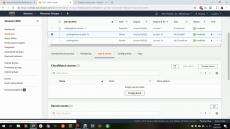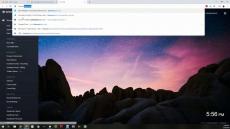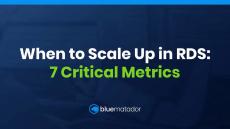|
By Keilan Jackson
When administering your Kubernetes cluster, you will likely run into a situation where you need to delete pods from one of your nodes. You may need to debug issues with the node itself, upgrade the node, or simply scale down your cluster. Deleting pods from a node is not very difficult, however there are specific steps you should take to minimize disruption for your application.
|
By Mark Siebert
Amazon SQS is a message queuing service that allows you to send and receive huge numbers of messages from a queue using a simple API. Using Amazon SQS, without setting up any infrastructure, you can have a distributed and fault tolerant queuing system. Since SQS is a managed service, you have less visibility with traditional monitoring tools. As such, it becomes even more important to take advantage of the available monitoring tools in AWS.
|
By Mark Siebert
If you’re using AWS Kinesis in your application, you’ll want to monitor your Kinesis streams to make sure they are healthy and that your producers and consumers are interacting with them correctly. CloudWatch exposes many metrics that can help you determine the health of your Kinesis streams, but it can be a pain to set up. In this post, we’ll discuss the metrics that are most helpful, how to get CloudWatch up and monitoring your Kinesis streams, plus an easier alternative.
|
By Blue Matador
A lot of engineers think a project is done once the code is live. In a perfect world, that could be true—alas, commits are rarely free of problems. For companies that have a lot of focus on dev but little on ops, this can quickly turn into a nightmare. Fortunately, there are a lot of infrastructure monitoring tools out there that can help marry DevOps and keep your apps, websites, and processes running smoothly.
|
By Mark Siebert
Have you noticed recently that your AWS Lambda invocation requests are getting throttled? If so, your Lambda functions are probably not running as designed. Let’s examine the possible causes and solutions to poor Lambda performance.
|
By Blue Matador
Amazon Web Services (AWS) is pretty much ubiquitous these days, with everyone from tiny startups to large enterprises using the cloud service to run their apps, websites, and processes. For small businesses, being able to predict your budgets is paramount. Unfortunately, AWS costs can be very difficult to forecast. In this blog, we’ll go over the pros and cons of the tools available to help you estimate your AWS costs.
|
By Blue Matador
Inodes, speculated to be short for “index nodes,” have been around since the introduction of the first UNIX file system around the late 1970s. They were adopted into Linux in the 90s—and for good reason. They’re an excellent way to keep track of how your files are stored, and the method many systems are still based on today.
|
By Keilan Jackson
Amazon’s EKS service (Elastic Container Service for Kubernetes) allows you to create a Kubernetes control plane in your AWS account without having to configure Kubernetes master nodes, etcd, or the api servers. In this blog post we will cover the motivation for using EKS, the preparation required to create an EKS cluster, how to configure EKS in Terraform, and how to set up kube2iam with EKS.
|
By Keilan Jackson
One highly requested feature of AWS’s Application Load Balancer is the ability to assign static IP addresses. Unfortunately, ALBs do not support this feature and it is unlikely they will in the near future. Today, the only way to achieve static IP addresses for your application behind an ALB is to add another layer in between the client and your ALB which does have a static IP address, and then forward requests to your ALB.
|
By Keilan Jackson
Deploying Docker images to Kubernetes is a great way to run your application in an easily scalable way. Getting started with your first Kubernetes deployment can be a little daunting if you are new to Docker and Kubernetes, but with a little bit of preparation, your application will be running in no time. In this blog post, we will cover the basic steps needed to build Docker images and deploy them to a Kubernetes cluster.
|
By Blue Matador
Cloud CORE is an open source tool that helps you calculate real-time, resource-specific costs in Amazon Web Services (AWS). This video explains how to best use the tool. Cloud CORE was developed by engineers at Blue Matador.
|
By Blue Matador
Every innovative team has two competing interests: rapid feature development and production stability. Blue Matador enables the best of both worlds, where time-strapped developers and DevOps teams only get notified of actionable events that threaten production. See how it works with this demo from our Founder and CEO Matthew Barlocker.
|
By Blue Matador
Monitoring freeable memory will help you know when it is time to scale your Amazon RDS cluster. Freeable memory is not reported by the database, but rather by the OS. Freeable memory is the combination of unused and temporarily used memory. It is the memory that the system can grant without adverse effects. When an Amazon RDS instance runs out of freeable memory the OS may do up to three things.
|
By Blue Matador
In another video we laid out seven critical metrics you should monitor with AWS CloudWatch to know when to scale your database cluster. This video will focus on the first of those metrics, database connections.
|
By Blue Matador
RDS is Amazon's managed relational database service. While RDS manages your databases maintenance, uptime and upgrade it is your responsibility to determine the cluster's scale and capacity. So the big question is when do you need to scale up? To answer this question you should understand and monitor seven metrics for each server in your cluster. They are: Database connections, Freeable memory, CPU credit balance, Free local storage, Replica lag, Commit latency, Select latency
|
By Blue Matador
A common problem with Amazon CloudFront and Amazon S3 hosting deals with negative TTLs. Matthew from Blue Matador outlines the steps needed to correct this problem. Understand eventual consistency in S3. New items may take time to propagate through redundant systems and be available in all locations., Understand CloudFront's default policy for handling errors, like 403 forbidden, is to cache that error for 5 minutes., The solution is to modify distribution settings in CloudFront.
|
By Blue Matador
In this video Matthew Barlocker, the CEO of Blue Matador, will show you how to get custom error pages in AWS S3 and/or Cloudfront.
|
By Blue Matador
In this video Blue Matador will walk you through how to set up Amazon SNS to receive CloudWatch alarms by email or text message. Using AWS CloudWatch isn't hard, it's just tedious with an unusable UI. We are experts in AWS and Kubernetes monitoring and have built Blue Matador to make the lives of DevOps professionals easier. Learn more about our cloud monitoring solution and other CloudWatch resources at www.bluematador.com.
|
By Blue Matador
Before Blue Matador Canopy was mostly using CloudWatch to monitor their AWS and Kubernetes infrastructure. Things they didn't know they should monitor would break. Now, they have moved from being proactive rather than reactive and are monitoring all of the unknowns. Find out more at www.bluematador.com
|
By Blue Matador
Everything you need to know, nothing you don't. We're big fans of saving time, money, and effort. In this ebook, learn the most painless way to deploy your app to AWS.
- December 2021 (1)
- October 2020 (5)
- September 2020 (6)
- August 2020 (6)
- July 2020 (7)
- June 2020 (7)
- May 2020 (5)
- April 2020 (5)
- March 2020 (3)
- February 2020 (3)
- November 2019 (1)
- October 2019 (5)
- September 2019 (5)
- August 2019 (2)
- July 2019 (2)
- June 2019 (5)
- May 2019 (3)
- April 2019 (7)
- March 2019 (5)
- January 2019 (1)
- December 2018 (5)
- November 2018 (5)
- October 2018 (4)
Blue Matador is an automated monitoring and alerting tool for AWS and Kubernetes environments. Avoid the anxiety of wondering, "Do I have an alert for that?" and the drain of continually configuring the right alerting thresholds. Out-of-the-box, Blue Matador will notify you of critical issues related to your infrastructure without any configuration. Rest easy knowing that Blue Matador will surface critical issues so that you can get time back to focus on what is most important, not maintaining monitoring tools.
Benefits of Blue Matador's automated monitoring:
- Focus on what's most important: You could spend all day constantly configuring your monitoring tools to ensure you don't miss anything...or you could use Blue Matador and get time back.
- Be all knowing, effortlessly: Instantly have full monitoring coverage of your AWS environment, even potential issues you weren't aware of. Blue Matador will surface the unknowns in your infrastructure.
- Relax, Blue Matador has you covered: Stop worrying about missing lurking problems, be confident knowing Blue Matador is watching all of your infrastructure, especially the specific metrics you may not be focused on all the time.





















